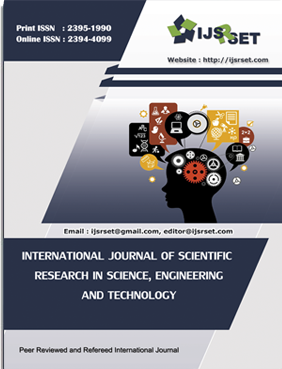A Review of Applied GIS Based in Sustainable Water Resources Management in Malacca River Case Study: An Observation Perspective
Keywords:
Water pollution, sustainability, management, GIS, protecting.Abstract
Water resources have become an issue in supplying freshwater for human to carry out daily activities. The reasons for this problem water pollution occurring in rivers. Among the methods to overcome this problem is the adoption of the concept of sustainability in water resources management in Malacca River. Practicing this concept will require a technology to help in planning as a whole, namely Geographical Information System or GIS. GIS is a tool widely used in determining the quality and quantity of water resources, especially at the river basin scale, to manage water resources. The site selection for observation in this review paper is Malacca River, which have a wide river basin and suitable for study. As a result, GIS has the ability to combine various data and provide an answer for decision making in sustainable water resources management in Malacca River, such as physical perspective data (elevation and slope boundary, landuse data, meteorological data, hydrological data, etc.) and human perspective data (demographic and population data, stakeholders and businesses data, etc.). GIS helps users to develop a new model (for example water quality model) which become a main point in saving and protecting the environment and the human society.
References
- ASCE Task Committee for Sustainable Criteria, Sustainability Criteria for Water Resource Systems, Division of Water Resources Planning and Management, ASCE, Reston, USA, 1998.
- Clark, M.J. and Gardiner, J., Strategies for handling uncertainty in integrated river basin planning, in Integrated River Basin Development, edited by C. Kirby and W.P. White, John Wiley and Sons, Chichester, 1994.
- Fresco, L.O. and Kroonenberg, S.B., Time and spatial scales in ecological sustainability, Landuse Policy, Vol. 9, pp.155-168, 1992.
- Hua, A.K., Geographic Information System (GIS): Introduction to the computer Perspective, Geografia: Malaysian Journal of Society and Space, Vol. 11, No. 1, pp. 24-31, January 2015.
- Hussain, A., Working towards sustainable development, Conference report, Southern Asian Institute, New York, 1992.
- IUCN (World Conservation Union), UNEP (United Nations Environment Programme) and WWF (World Wide Fund for Nature), Caring for the Earth: A Strategy for Sustainable Living, IUCN, Gland, Switzerland, 1991.
- Jain, S.K. and Singh, V.P., Water resources systems planning and management. Elsevier, 2003.
- Lynam, J.K. and Herdt, R.W., ‘Sense and sustainability: Sustainability as an objective in international agricultural research’, Agricultural Economics, Vol. 3, pp. 381-398, 1989.
- Nasbah, N.N., Sungai Melaka tercemar, Utusan Online, Retrieved From http://ww1.utusan.com.my/utusan/info.asp?y=2010&dt=0123&sec=Selatan&pg=ws_01.tm, January 01, 2010.
- Pearce, D. and Turner, R.K., Economics of Nature Resources and the Environment, Vol. 8, pp. 80-96, 1990.
- Xu, Z.X., Takeuchi, K., Ishidaira, H., and Zhang, X.W., Sustainability analysis for Yellow river water resources using the system dynamics approach. Water Resources Management, Vol. 16, pp. 239-261, 2002.
- Yang, D., Oki, T., Herath, S. and Musiake, K., A geomorphology – based hydrological model and its applications. Mathematical models of small watershed hydrology and application, p259-300, 2002.
- WCED (World Commission on Environment and Development), Our Common Future, Oxford University Press, Oxford, 1987.
Downloads
Published
Issue
Section
License
Copyright (c) IJSRSET

This work is licensed under a Creative Commons Attribution 4.0 International License.

